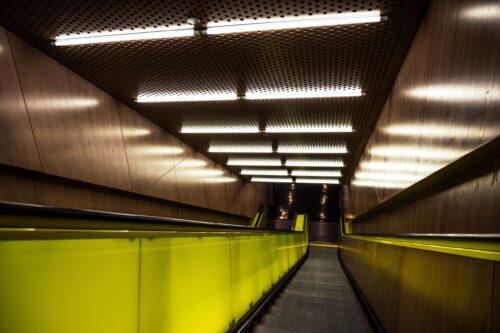The Future of Office Buildings
As a kid I thought it would be cool to be an architect. After all, I loved to draw and build models, and according to the Brady Bunch (the father was an architect), you got to work at home a lot. A significant amount of years, less TV and some real-world experience, however, revealed that career was much more complicated and, frankly, a lot less fun than I imagined.
As a kid I thought it would be cool to be an architect. After all, I loved to draw and build models, and according to the Brady Bunch (the father was an architect), you got to work at home a lot. A significant amount of years, less TV and some real-world experience, however, revealed that career was much more complicated and, frankly, a lot less fun than I imagined. Yet I’m still fascinated with buildings, particularly skyscrapers, and I’ve always had great admiration for the artists who envisioned such masterpieces as the Chrysler Building or the more contemporary 333 W. Wacker here in Chicago.
But as our cover copy attests, we may very well be at the end of the era of the iconic skyscraper. Why? They’re just not practical anymore. I grew up in Chicago, and the Sears Tower was always visible, even from miles away. Yet today, Sears’ headquarters is in the suburbs. Yours truly is writing this column from the city’s western suburbs where our offices are located along with countless others. A trend? Apparently so.
In somewhat of a salute, this issue purposefully highlights a handful of great looking skyscrapers planned or going up around the United States—the new New York Times Building, the AOL-Time Warner Center and the proposed Trump Tower Chicago. Take a good look. The industry experts we’ve spoken to indicate these projects may be the last of these mountainous structures. There’s a host of reasons aside from a weak economy: real estate and taxes are often cheaper in the suburbs; in a post-9/11 world, no one wants to be a target; businesses don’t want to be stacked upon one another; and finally, back to my Brady Bunch reference, more people are, or will be, working from home.
This doesn’t mean high-rises will no longer be built, but they’ll certainly be smaller, and technology—most notably dedicated employee phone and computer lines (possibly wireless)—will take precedence over cubicles. This may be a good thing for the engineer. I heard several real estate moguls say recently that they feel architects don’t understand that a building’s backbone is the paradigm. In fact, even in this down office market, there’s a tremendous opportunity for engineers to cash in on demand for broadband, wireless capabilities and redundant and diverse high-tech infrastructures to accommodate a growing trend of increased building and business automation.
But another issue lies on the table for those continuing on in this market: If urban offices are destined to become smaller, what will they look like? As a design and build community in an era of “faster, cheaper, better,” do we make more of less, or will the office tower of tomorrow go the route of the Victorian home, leaving the next century with the equivalent of a bunch of homogeneous split-levels?
Do you have experience and expertise with the topics mentioned in this content? You should consider contributing to our CFE Media editorial team and getting the recognition you and your company deserve. Click here to start this process.




